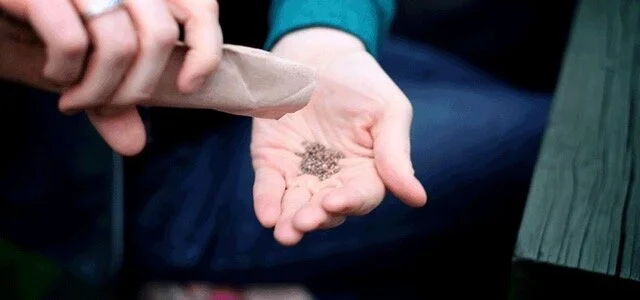Springtime in Texas is synonymous with vibrant displays of wildflowers, and Pease Park is no exception. This past “It’s My Park Day,” Pease Park Conservancy helped prepare the park for a spectacular floral bloom come this Spring. With the help of 100 volunteers and the assistance of the Austin Watershed Protection Department, a total of 36,000 square feet of the park over six different locations, were prepped and seeded with a carefully selected mix of wildflower seeds, perfect for Central Texas and its wildlife. One site will model a pollinator species habitat that will help bring a greater diversity of life in the park, as well as protect Shoal Creek from stormwater runoff. The Conservancy hopes these flowers will bring both beauty and sustainability to the park and to all park-goers.
The entire project was big, and it required more help than was provided by the fantastic volunteers on “It’s My Park Day.” Getting the park ready for the Spring bloom was a month-long process with lots of support every Saturday morning in October, as well as on a few weekday work-days. We want to acknowledge the hard work and time given to Pease Park Conservancy by the teams from Oracle, St. Edwards University, and The Texas Wranglers.
For successful and beautiful wildflowers, seeds need good contact with the soil. While it is good for soil retention that the park lawns don’t have very many patches of loose dirt, that wasn’t very advantageous for the wildflowers. Volunteers first broke up the soil and grass just enough to expose the nutrient soil below with rakes and pitchforks. But, they had to be careful not to tear up the grass too much, or the soil would become unstable and, with the next rainstorm, wash away taking the grass and wildflower seeds with it.
After the ground was raked up, the soil was ready for seeds. Each volunteer received a paper bag with a mix of seeds of many different shapes and sizes that they sprinkled over the broken-up soil. Once the seeds were spread, the volunteers then packed the seeds into the ground to re-stabilize the soil and ensure the seeds were safely in the ground and away from hungry birds.
At the heart of the parkwide project was the pollinator garden. Located along the bike trail, just south of 24th street, the pollinator garden is an 11,500 square foot “no mow” grow zone. The garden is designed to create a home for countless birds, squirrels, butterflies, bees, and other important pollinating insects. We want to maximize the positive impacts of the area, so in addition to wildflowers, the future addition of native Texas grasses will not only promote species diversity right here in the heart of Austin’s oldest public park, but will also help protect the creek from pollution and slow the flow of rainwater runoff as it enters the creek by functioning as a riparian buffer. Much like how a marshland slows down a hurricane before it can reach cities further inland, and how a carbon filter on a faucet purifies the water that comes out, a riparian buffer is a natural way of slowing and filtering all the water that runs off our streets and into our waterways, including Shoal Creek.
In the future, the Conservancy hopes to expand the wildflowers to even more of the park and to introduce more riparian buffers to improve the health of the park and make the world a little more colorful. You, too, can incorporate native wildflowers and grasses into your personal landscapes. The Conservancy is using the Pollinator Essentials Mix, Shade-Friendly Wildflower Mix, and Riparian Recovery Mix, all from Native American Seed in Junction, Texas.
Pease Park Conservancy. We serve the park, so the park can serve you.
Nick Boysen | Sustainability Intern, Pease Park Conservancy




